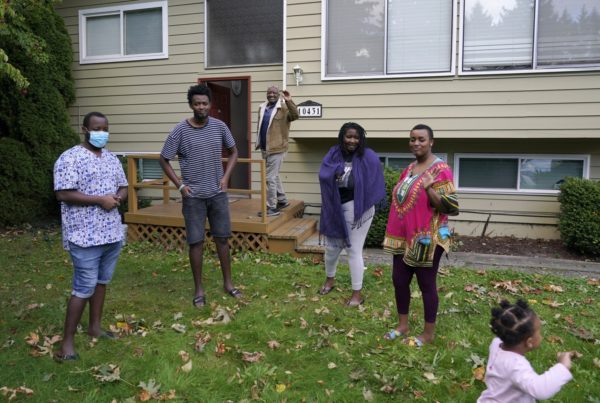In a big blow for the party, Texas Democrats were unable to flip nine state House seats they had hoped would give their party the majority this election season.
It was the biggest shot they’ve had in two decades to gain control of any lever of government in the state. For the past two decades, Republicans have had control of everything – the governorship, the state Senate and the state House.
Democrats thought things might change this year, mostly because they made serious inroads in Republican-held House districts in suburban counties in 2018. That year, Democrats flipped 12 seats in the Texas House, mostly in districts with changing demographics in the suburbs.
Democrats set their sights on nine more seats they thought could also go their way.
But Victoria DeFrancesco Soto with the Center for Politics and Governance at UT’s LBJ School said 2018 was a high-water mark for the party.
“I think that there was just a ceiling that was reached,” she said.
DeFrancesco Soto said Democrats got pretty close in a lot of those nine races, but it just wasn’t enough. This was a taller order than Democrats wanted to admit, she said.
“The way a district is drawn impacts the outcome,” DeFrancesco Soto said. “And these were districts that were drawn … to benefit Republicans.”
Texas’ current political lines were drawn following the conservative Tea Party takeover of state legislatures and Congress during the Obama administrations. DeFrancesco Soto said it’s really hard to overcome a structural advantage like that.
Jim Henson, a pollster who directs the Texas Politics Project at UT Austin, said Democrats also underestimated how many voters Republicans still have in the suburbs and the work Republicans did after those losses in 2018.
“We saw a lot of reaction among Republican officeholders in the Legislature to Democratic gains and narrow Republican losses,” he said. “And that carried through to the election in a way that I think was widely underestimated in its impact.”
In the 2019 legislative session, Republicans worked with Democrats on issues like education and property – things both sides could find some common ground on.
And it turns out voters noticed.
Luke Macias, a political consultant for some of the most conservative members of the Texas House, said he thinks the fact that Republicans got rid of straight-ticket voting for this election helped a lot of the House members in those suburbs where Democrats were making gains because of Donald Trump.
During the 2017 legislative session, state lawmakers eliminated the option for voters to simply choose one political party for all races down the ballot. Starting this year, voters would have to vote on races one by one. Straight-ticket voting had been popular; during the 2018 general election, almost 68% percent of voters cast a straight-ticket ballot.
“[Eliminating] that was a huge negative for Democrats,” he said. “We are seeing even in areas that were not fond of the president, you still saw them keeping their Republican legislator in power.”
It also boils down to the fact that demographics and politics just haven’t changed enough in Texas – and in these nine districts in particular.
Macias said it also didn’t help Democrats that Republicans did better with Latinos this election than they did in 2016 and 2018.
“This is not only good for a sitting state representative, who has Hispanic voters, but for the entire Republican Party,” he said.
Henson said the fact Republicans seem to have done better with Latinos should be a wake-up call for Texas Democrats. For a long time, the working theory has been that the state will become more Democratic as the state becomes more racially diverse.
If more Latinos vote in the suburbs, for example, they will likely vote for Democrats and Democrats will win more races.
But Henson said it’s been obvious for a long time that it’s not that easy.
“The evidence has been right in front of everybody that Republicans have been getting 30 to 40 percent of the Hispanic vote for two decades,” he said.
Henson said we don’t know enough about Latino turnout yet to say where exactly the weak spots were for Democrats.
DeFrancesco Soto said Democrats also weren’t able to do a lot of the ground work and person-to-person mobilization they usually do because of the pandemic.
But overall, she said, this doesn’t mean it’s all over and Democrats should just accept Texas will always be run by Republicans.
“Politics is a long game,” she said. “The fact that you had the margins that you had … is maybe a present loss, but in the long term, it’s building space for Democrats to recruit stronger candidates and maybe clinch those seats in the future.”
Macias said the 2018 election, particularly the close U.S. Senate race between Ted Cruz and Beto O’Rourke, showed him Republicans should run elections like they could lose them.
“There is no doubt that Texas is a state that can become competitive in any election cycle. And Beto O’Rourke proved that,” he said.
And it’s not like the gap between Republicans and Democrats in races isn’t narrowing. Many of these state House races were lost by only a couple percentage points. Things are changing statewide, too. In 2012, Republican presidential candidate Mitt Romney won Texas by almost 16 percentage points. In 2016, Donald Trump won it by 9. This year, Trump won it only by 6 points.
Henson said that’s progress.
“There is a line there,” he said. “It just doesn’t fit very dramatically in the frame of Texas changing colors or turning blue.”
Most importantly, DeFrancesco Soto said, more Texans voted this year than ever before.
“I think that is important from a civic engagement perspective,” she said. “Because we know that once people vote they are more likely to vote again.”
In a statement last week, the state party said, “while we achieved some goals in this election and came up short on others, we have marched forward” in the state.
“The slow pace of change might be disappointing at times,” party officials said, “however over years, it is meaningful and will lead to real help for the people who need us.”
Got a tip? Email Ashley Lopez at alopez@kut.org. Follow her on Twitter @AshLopezRadio.















